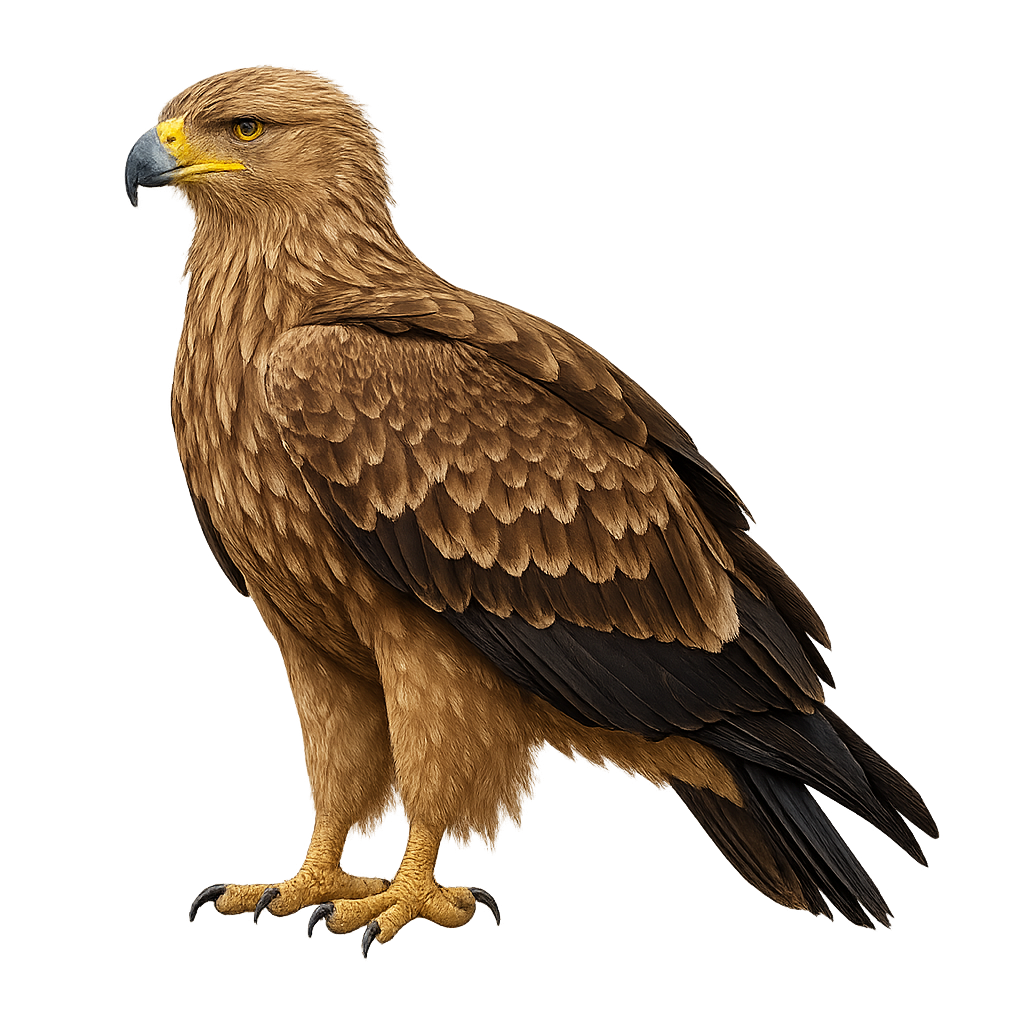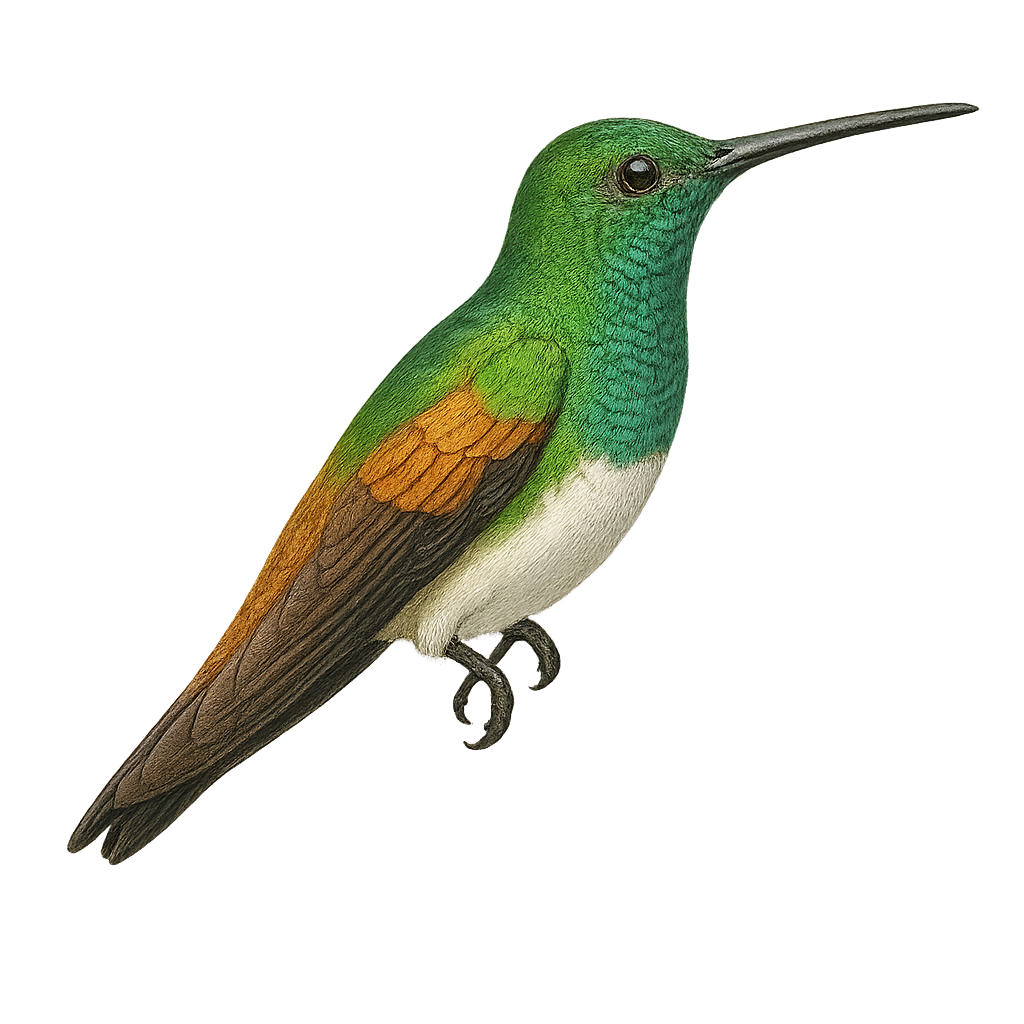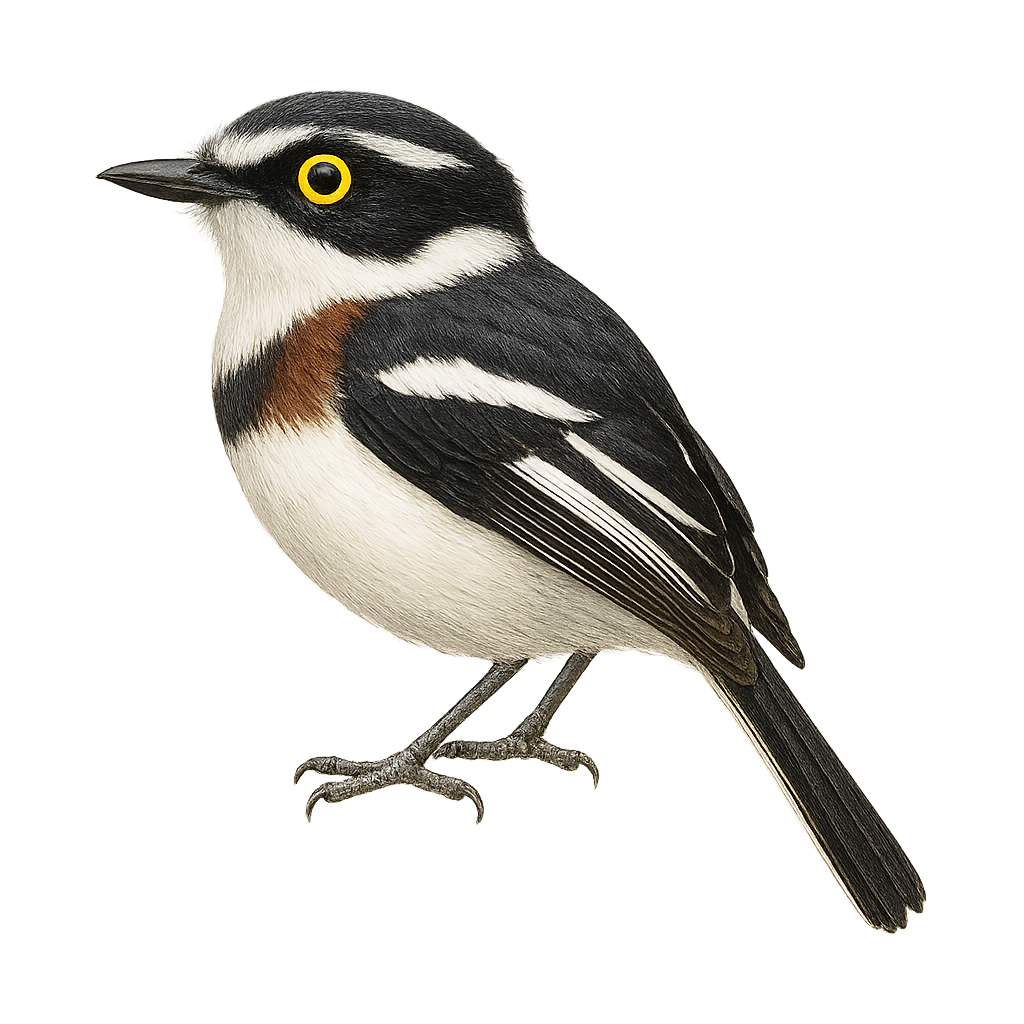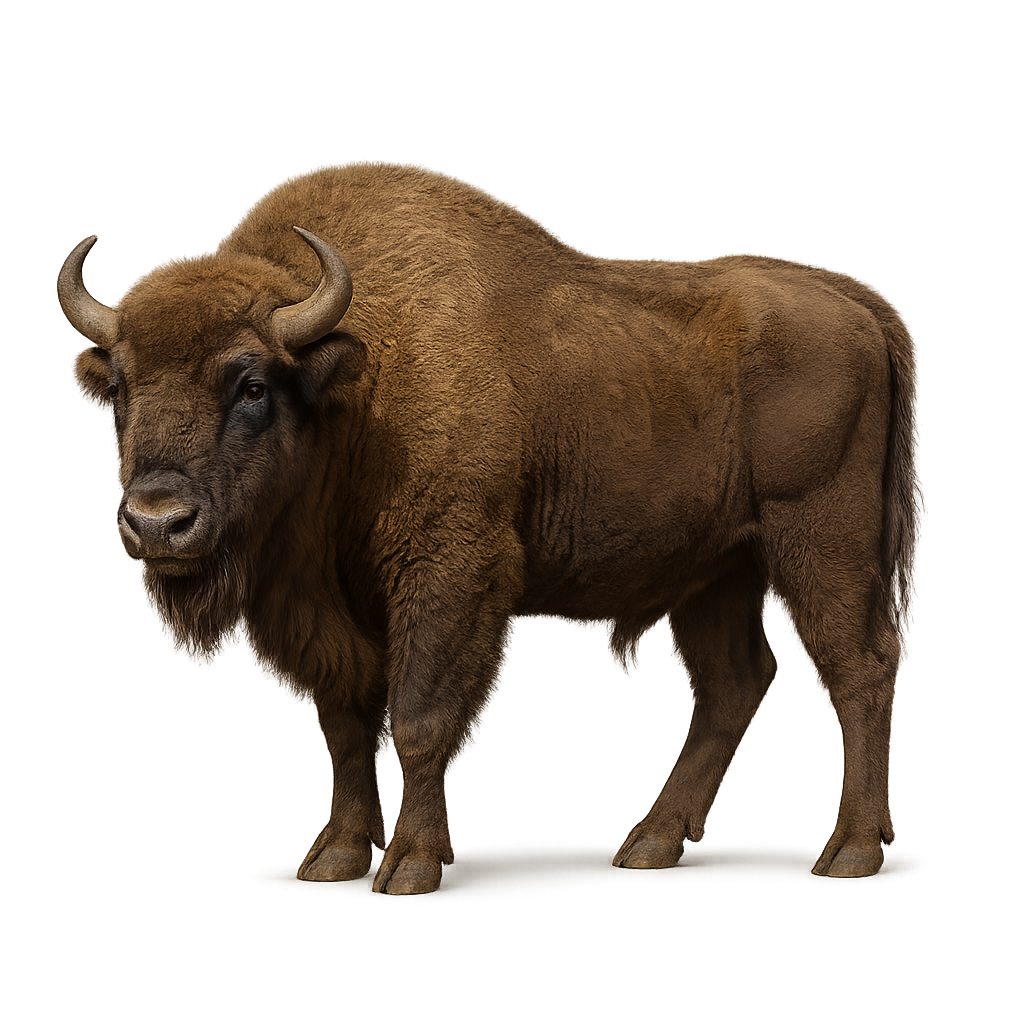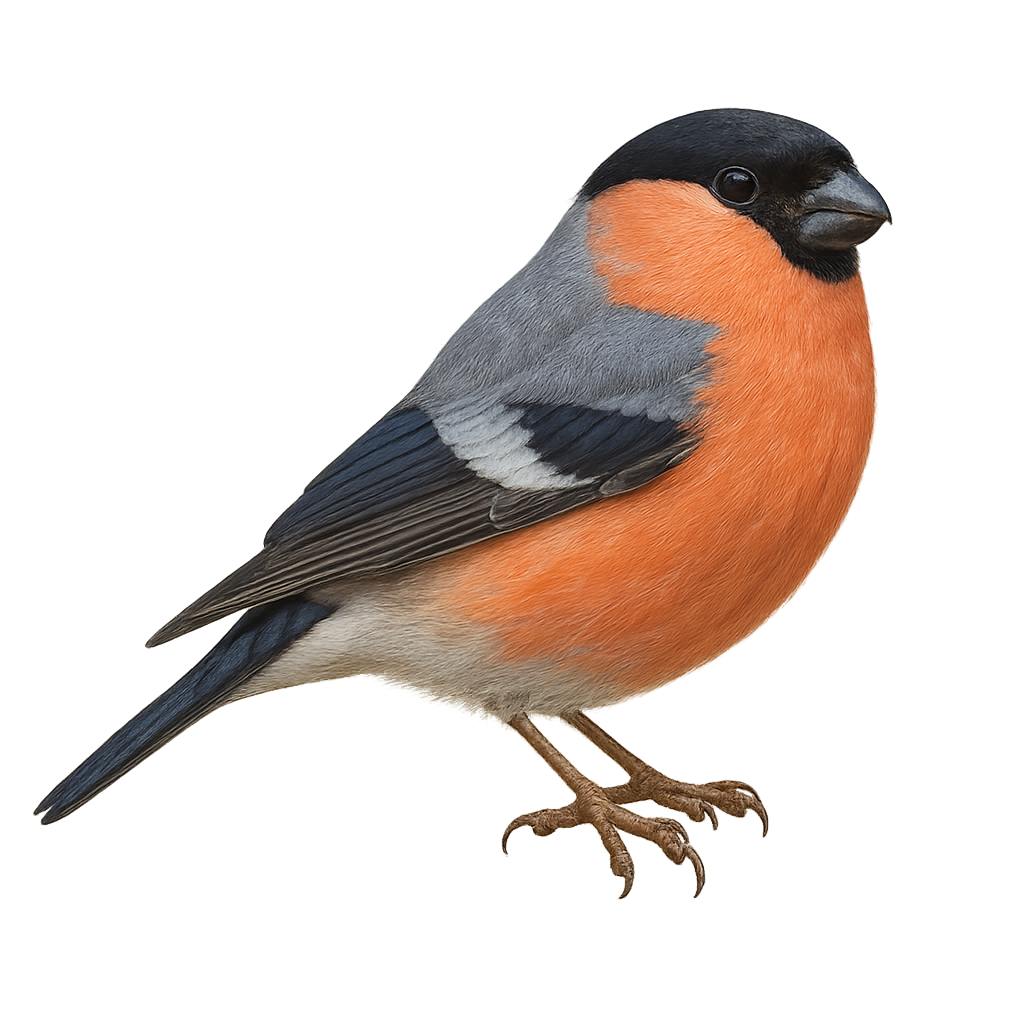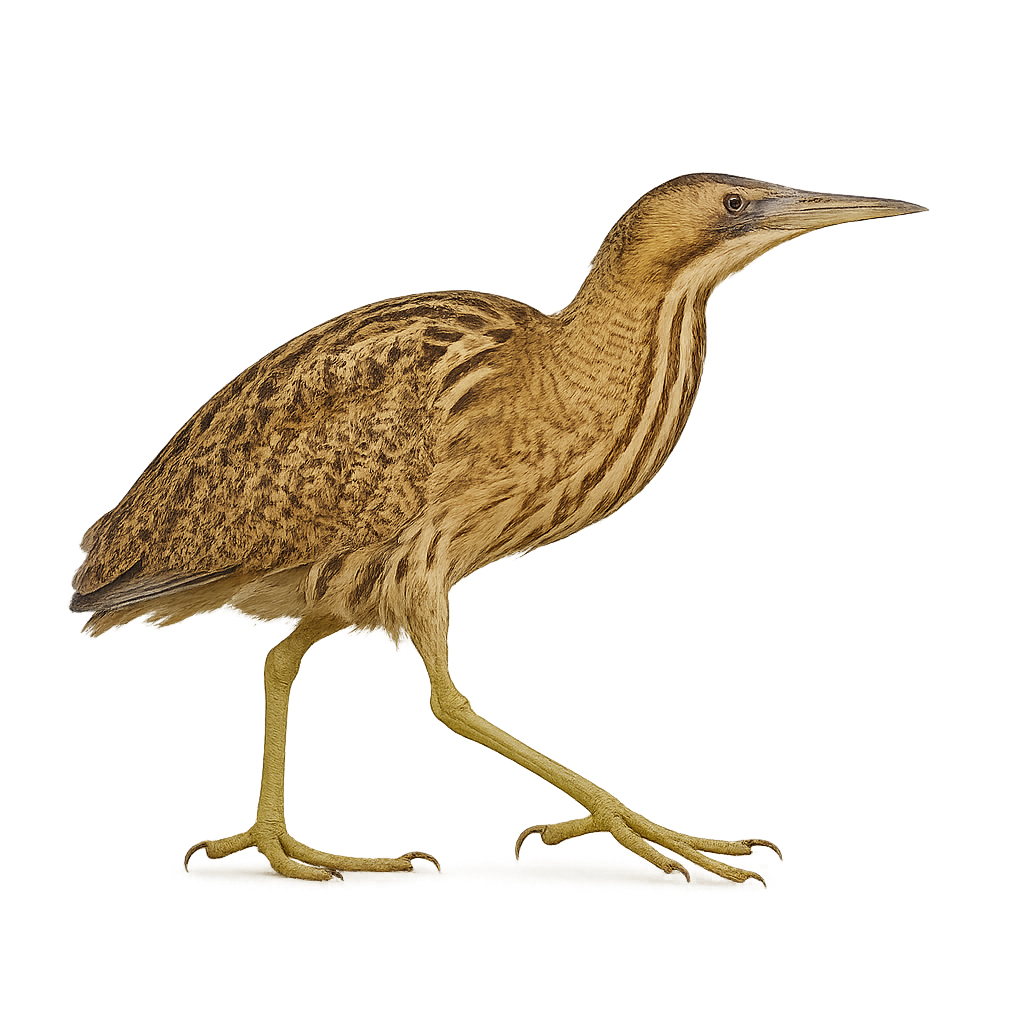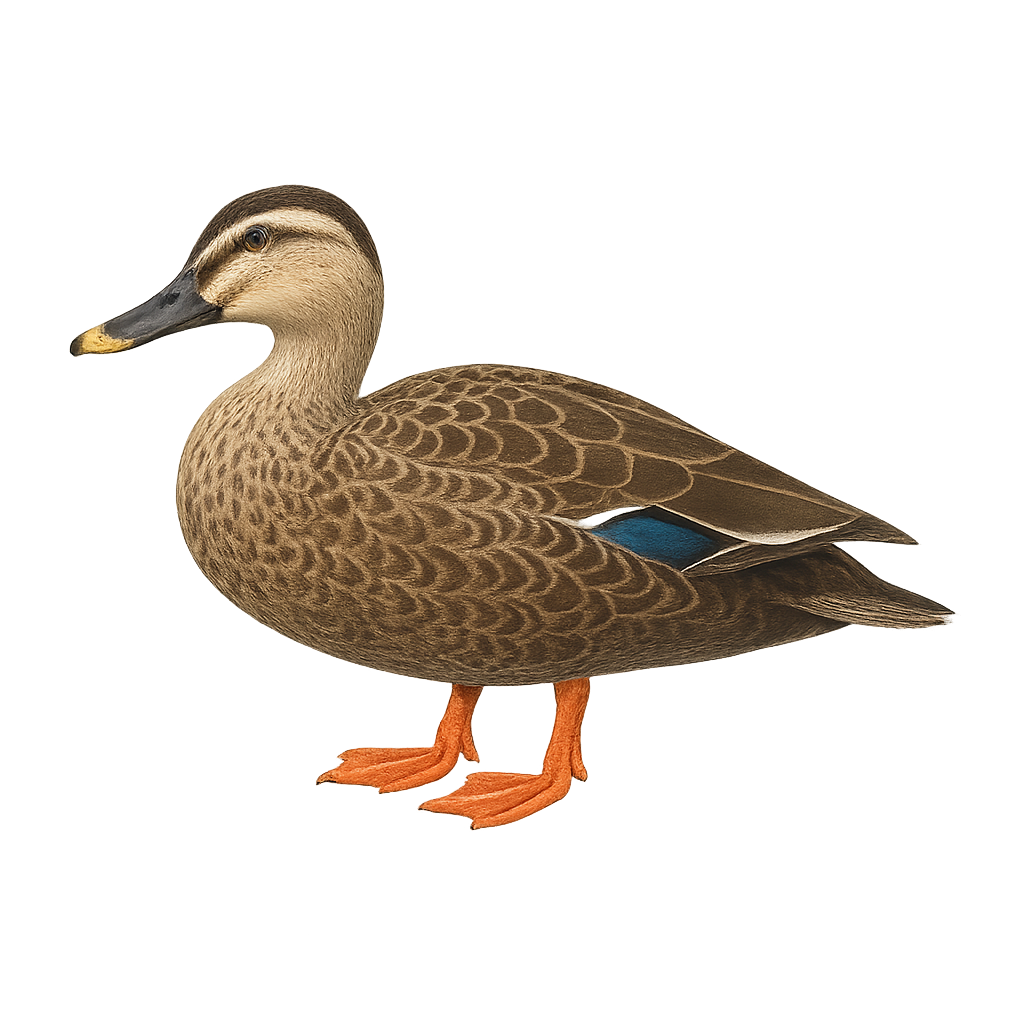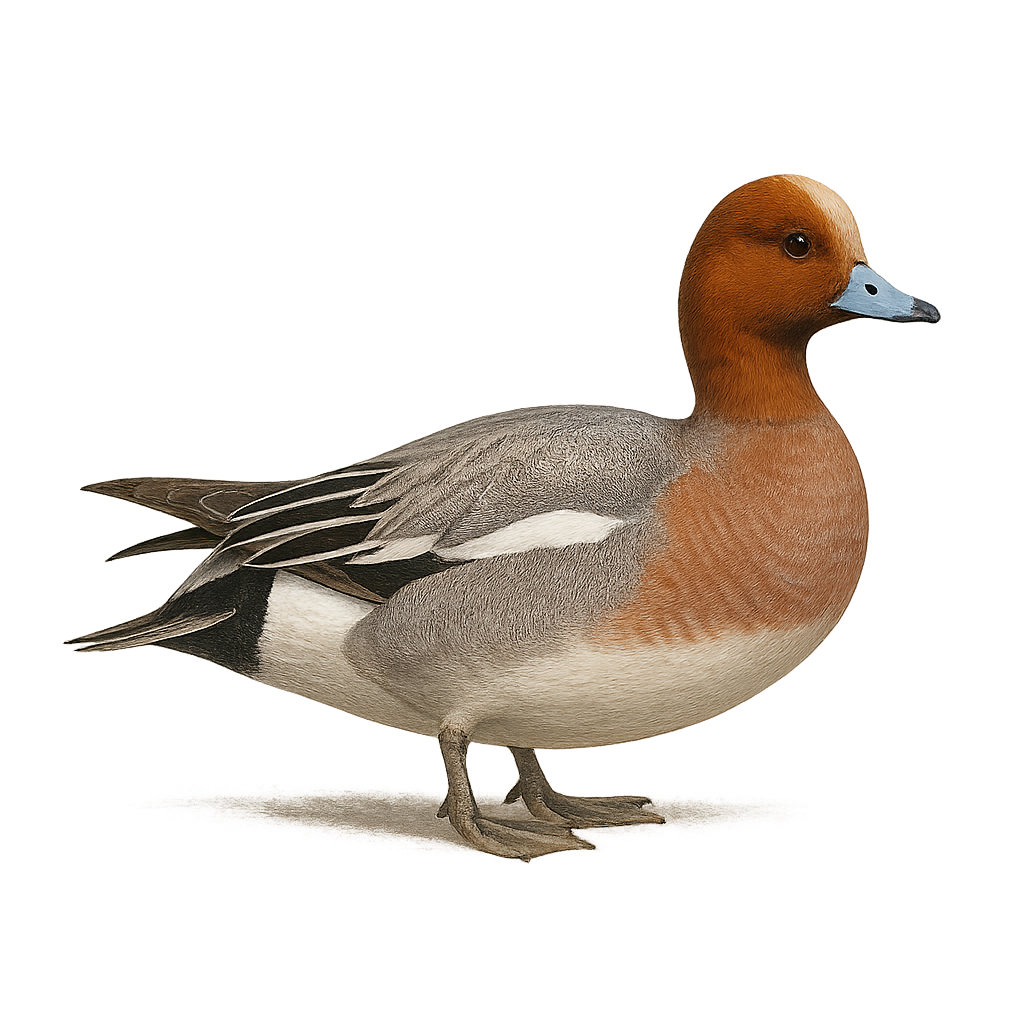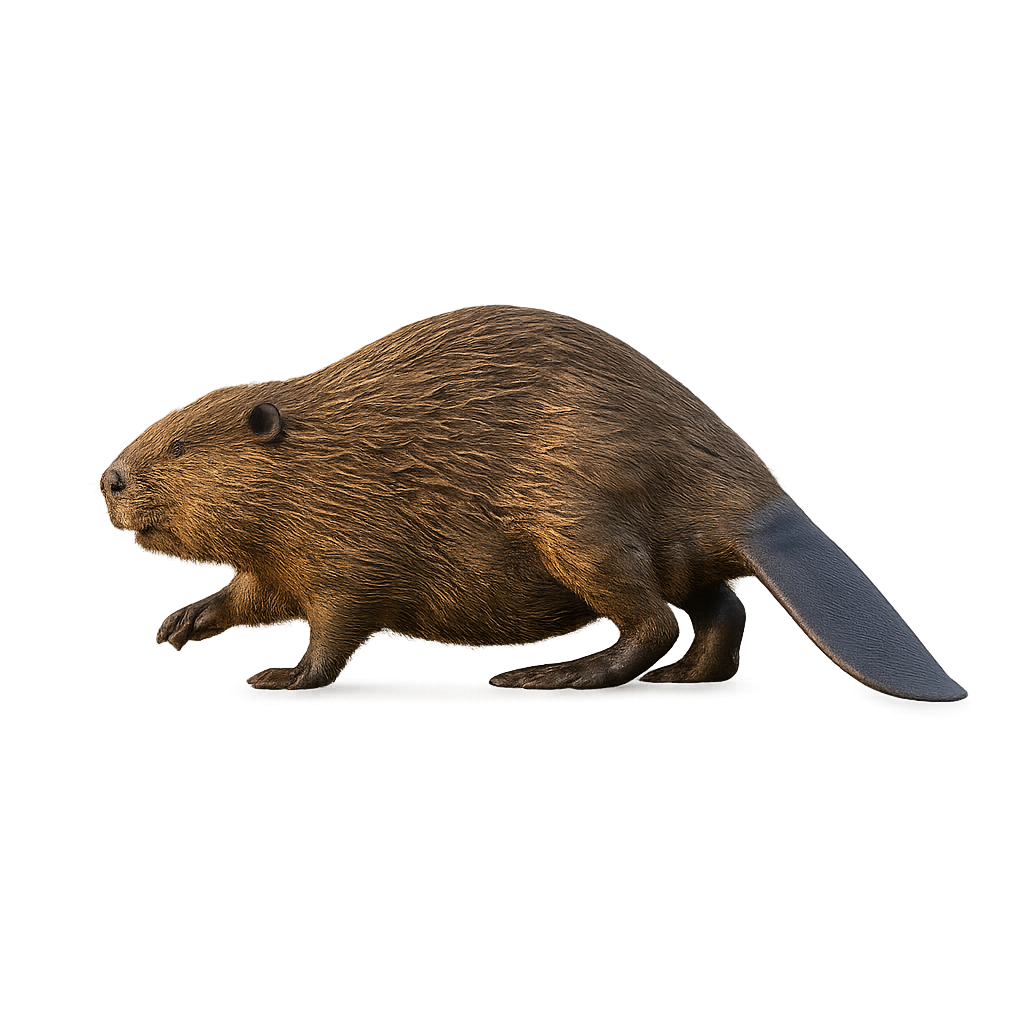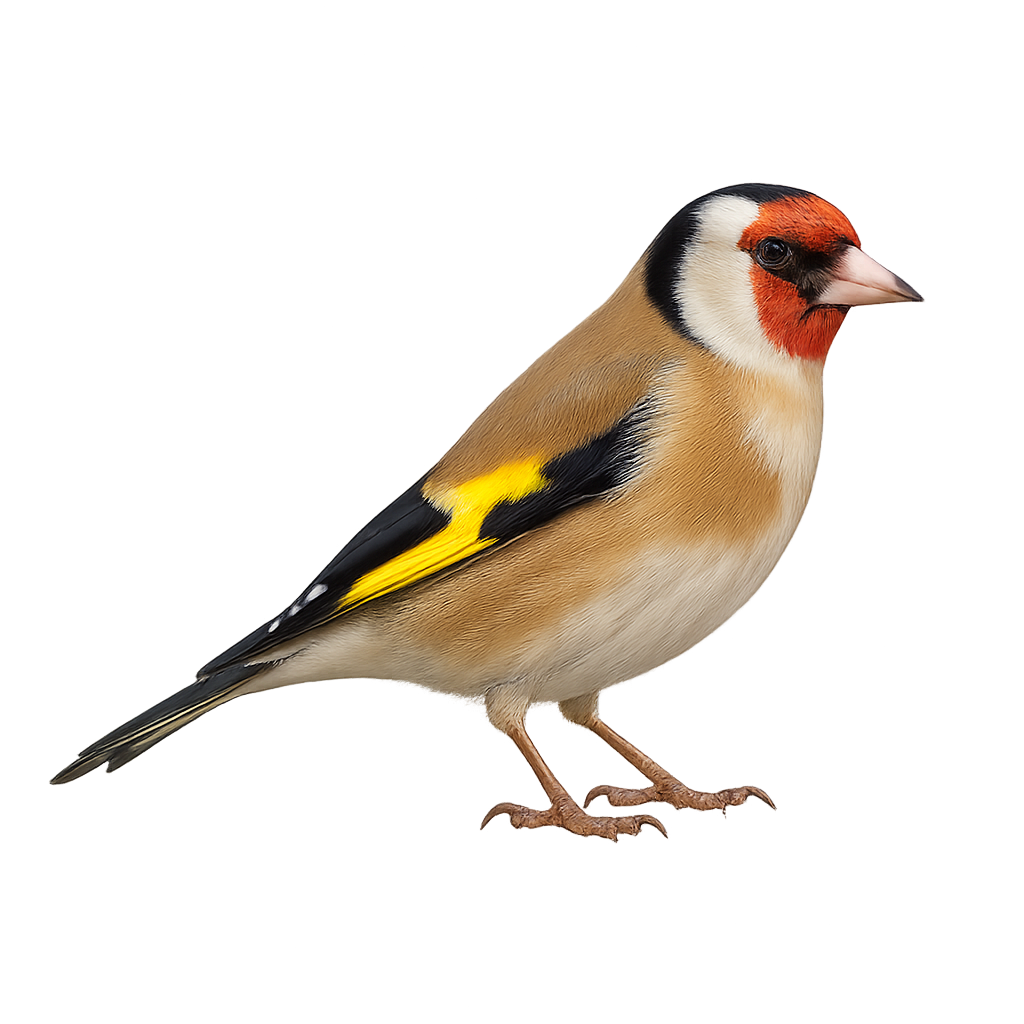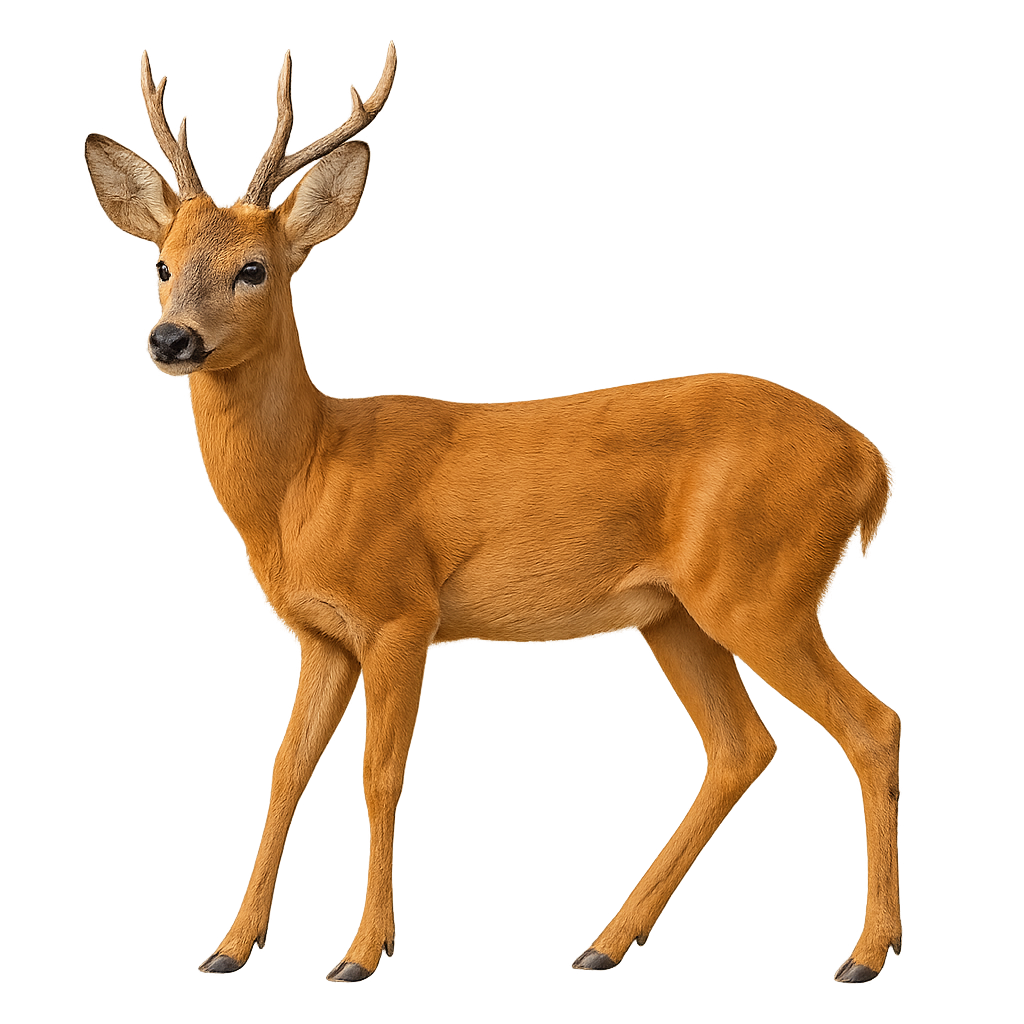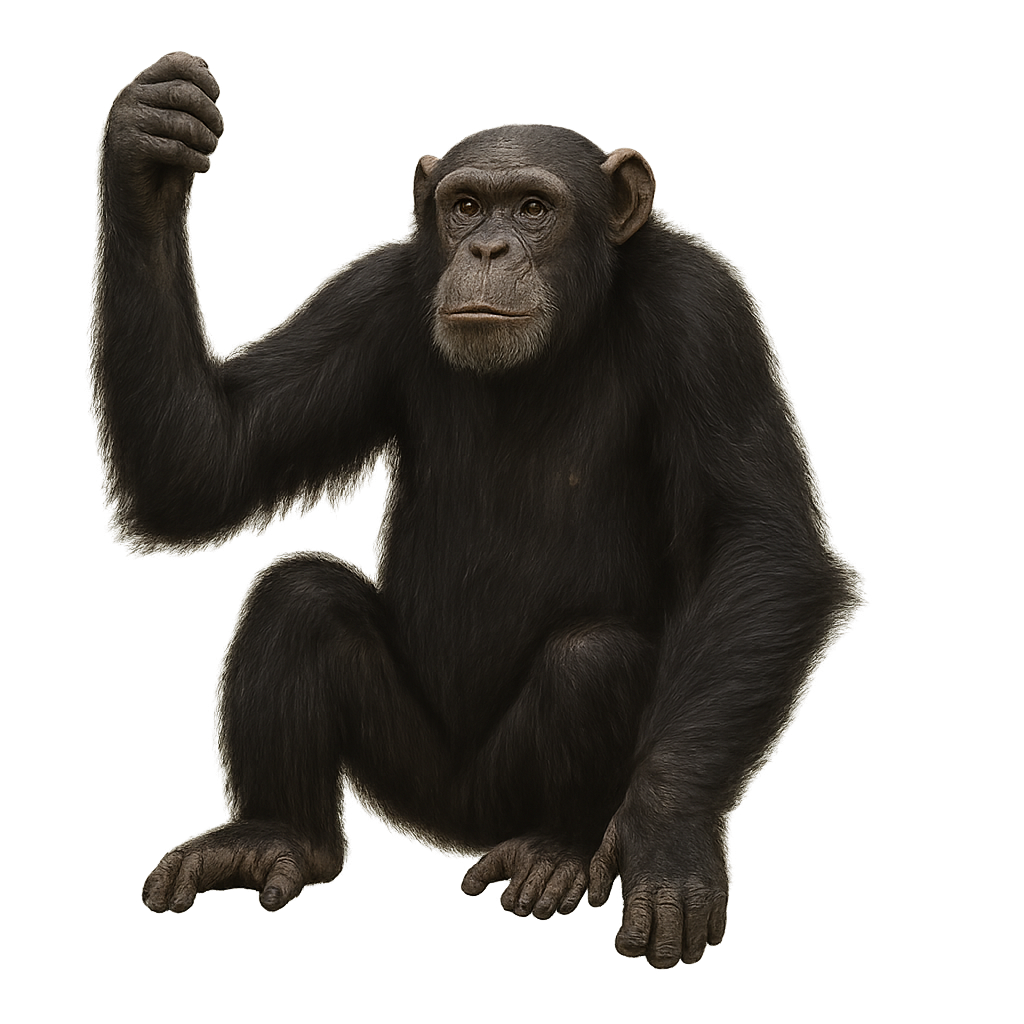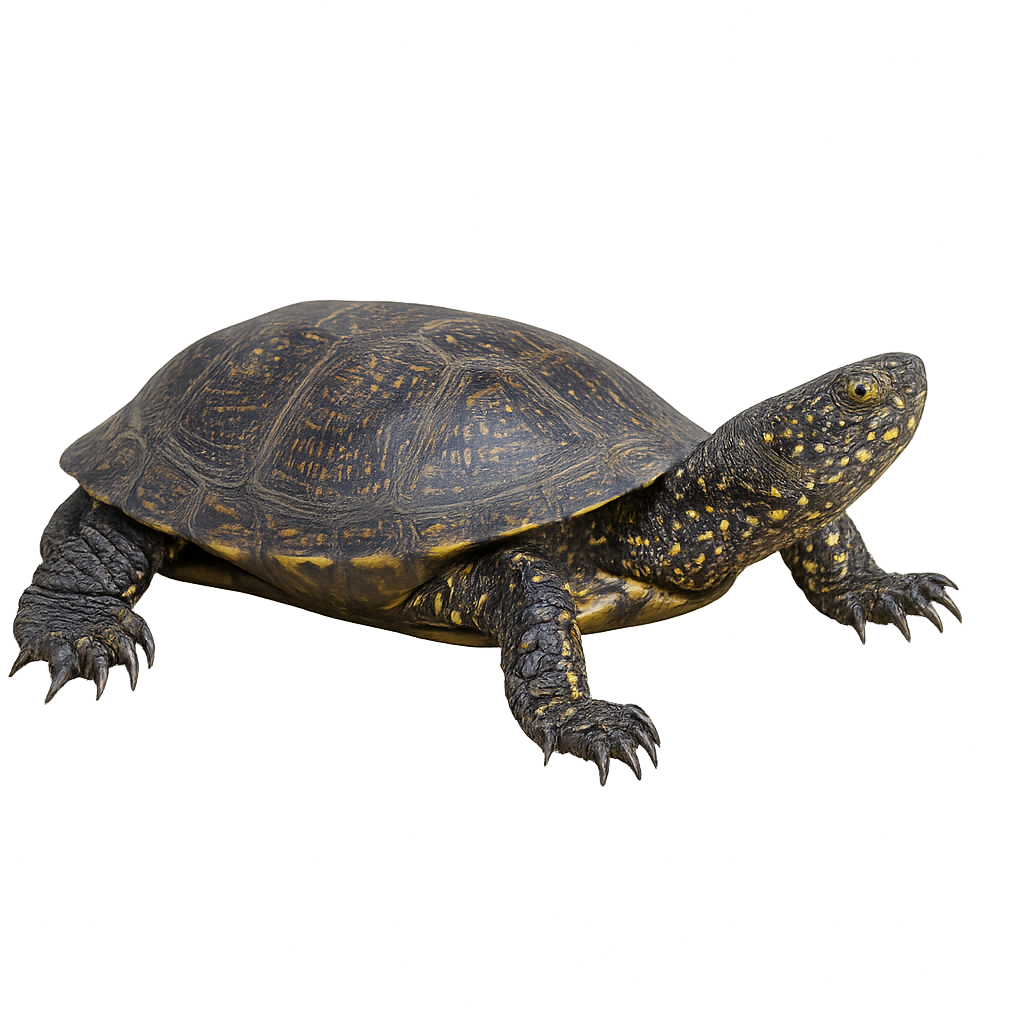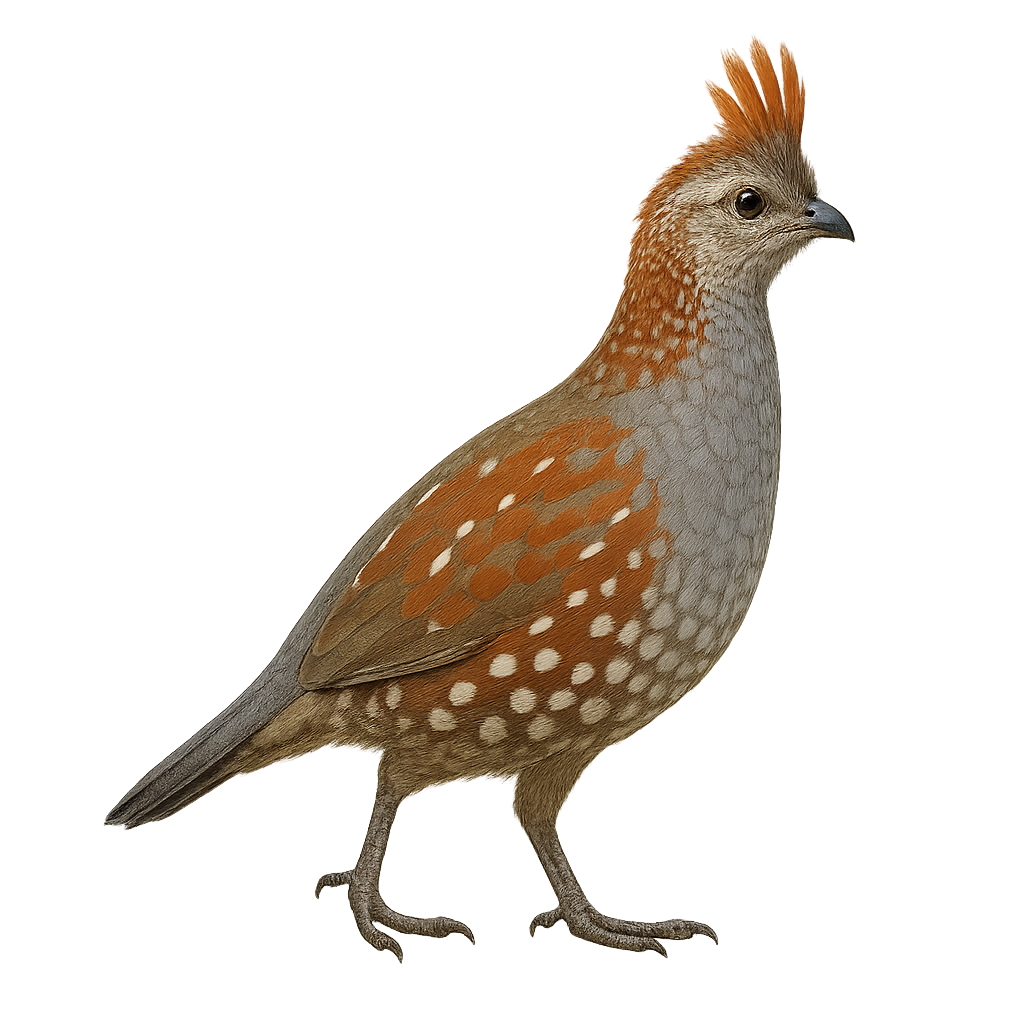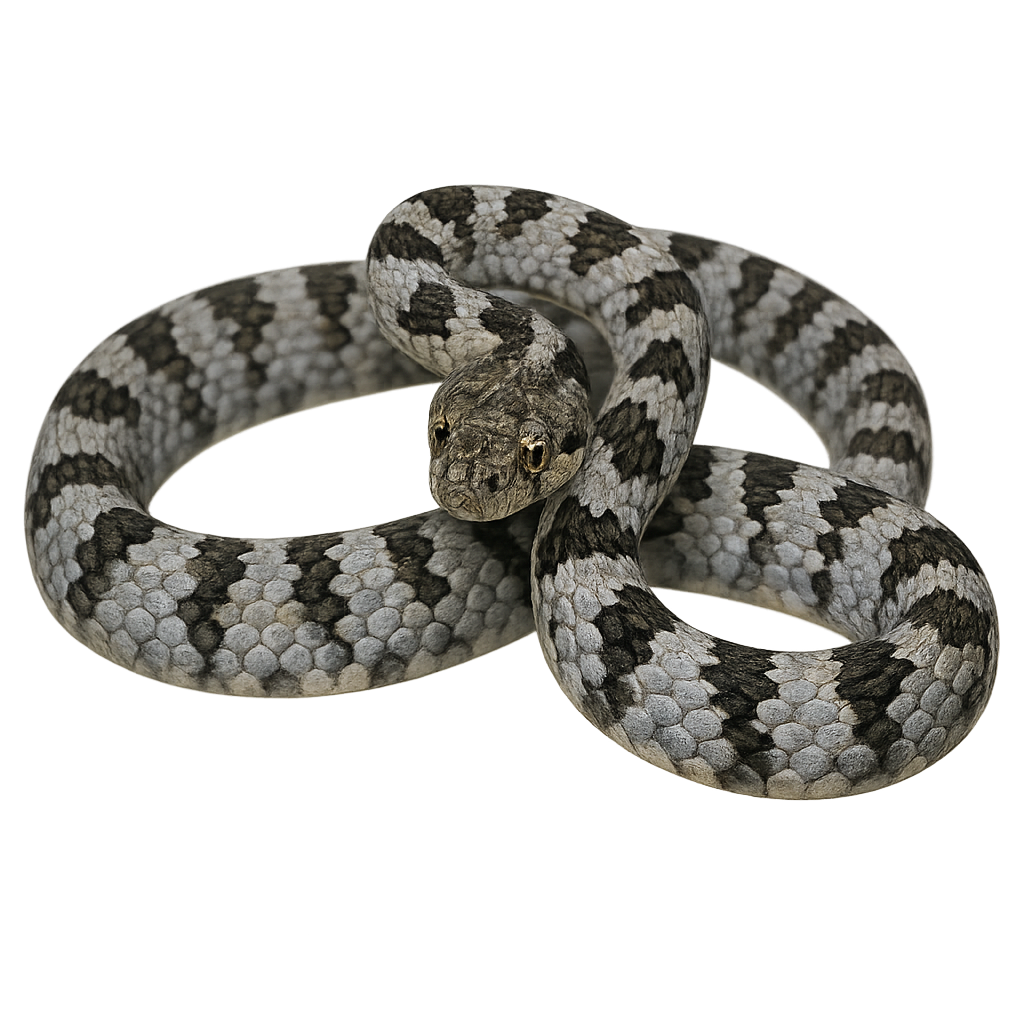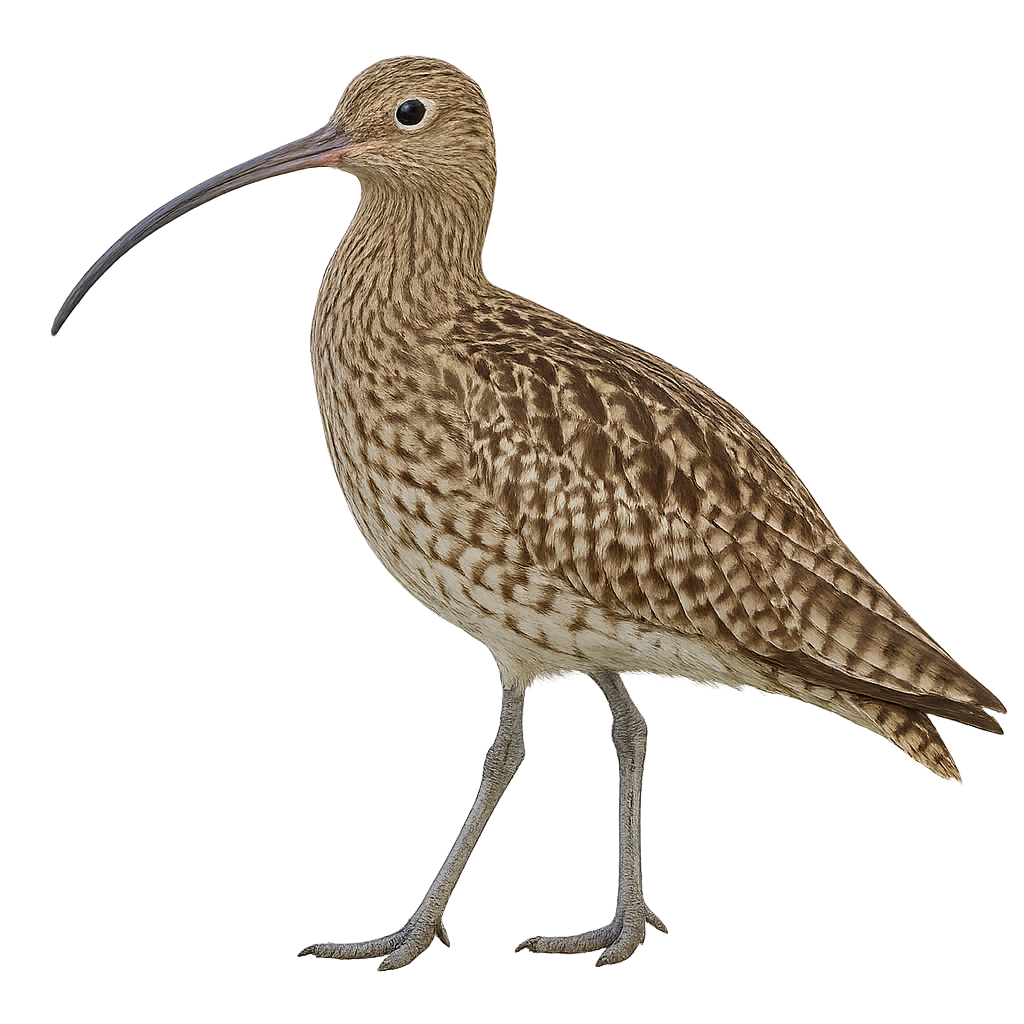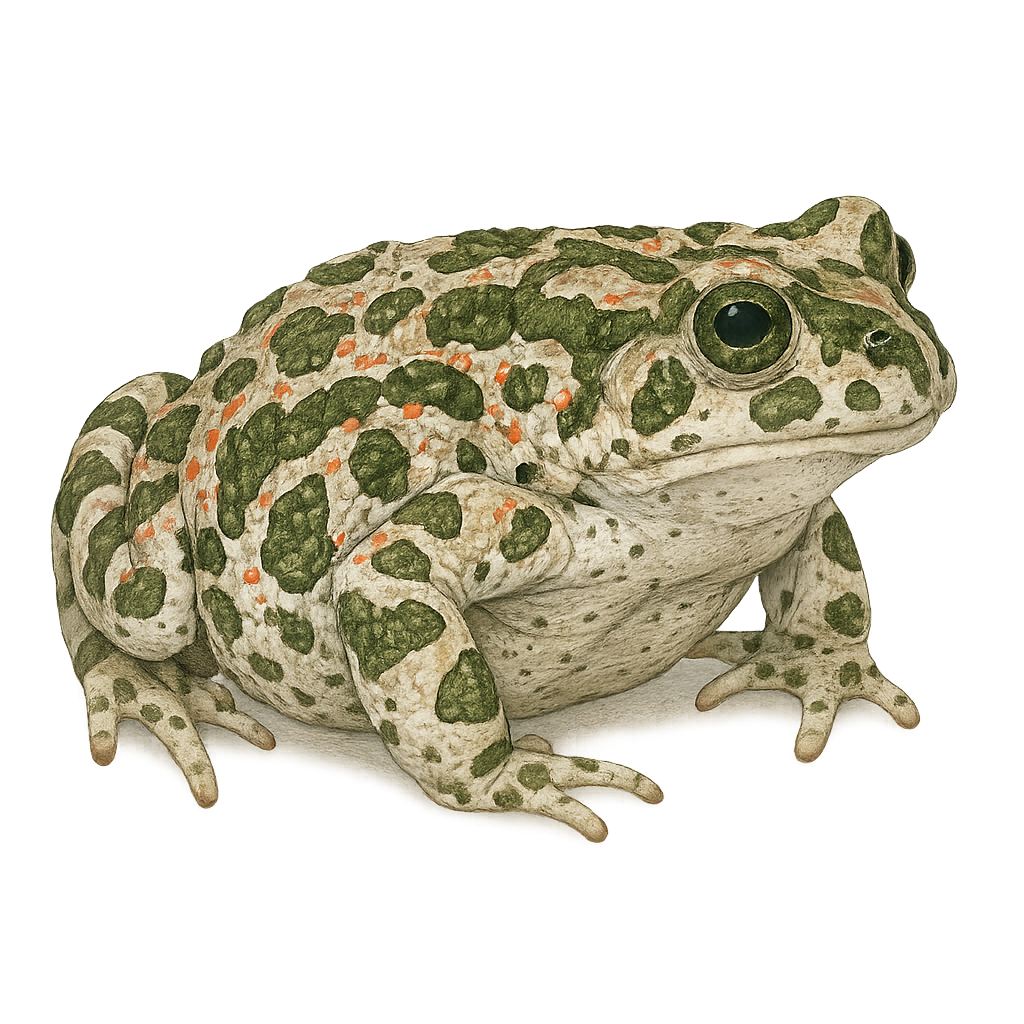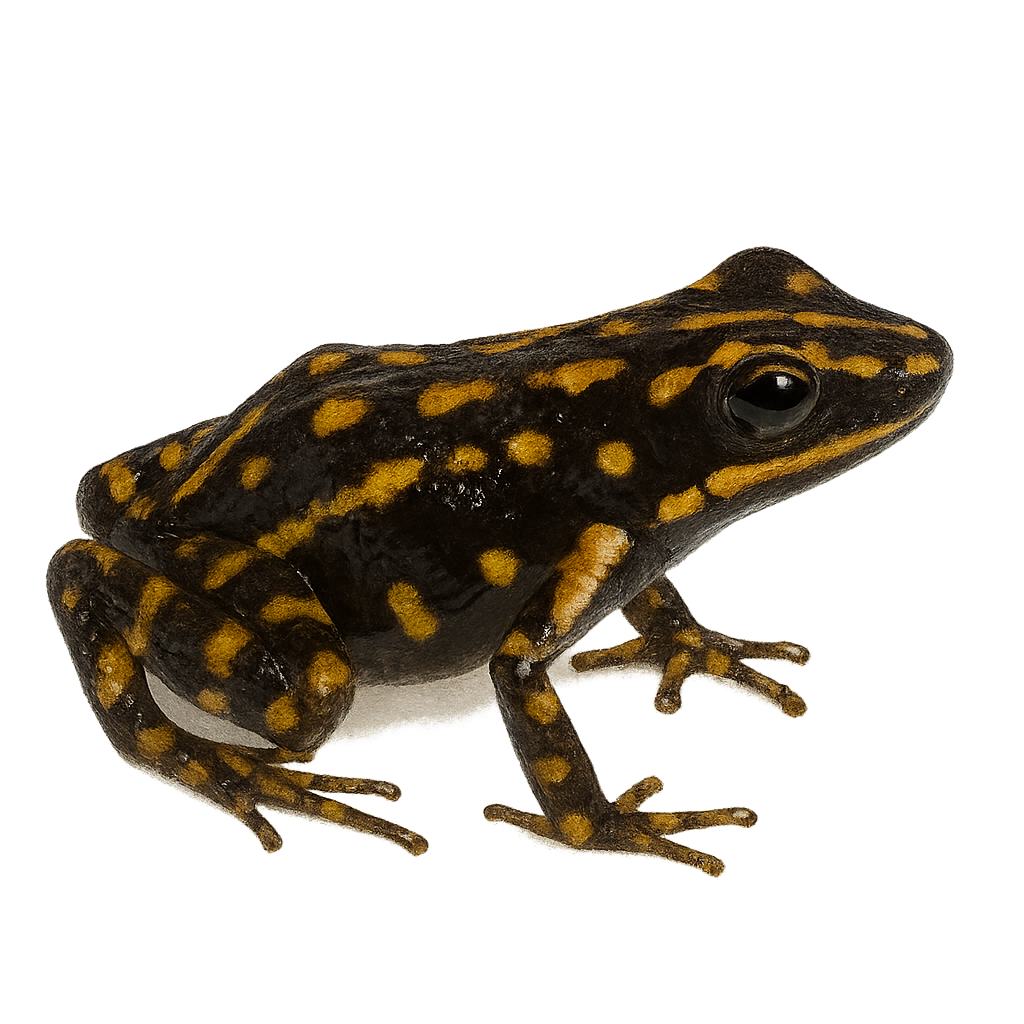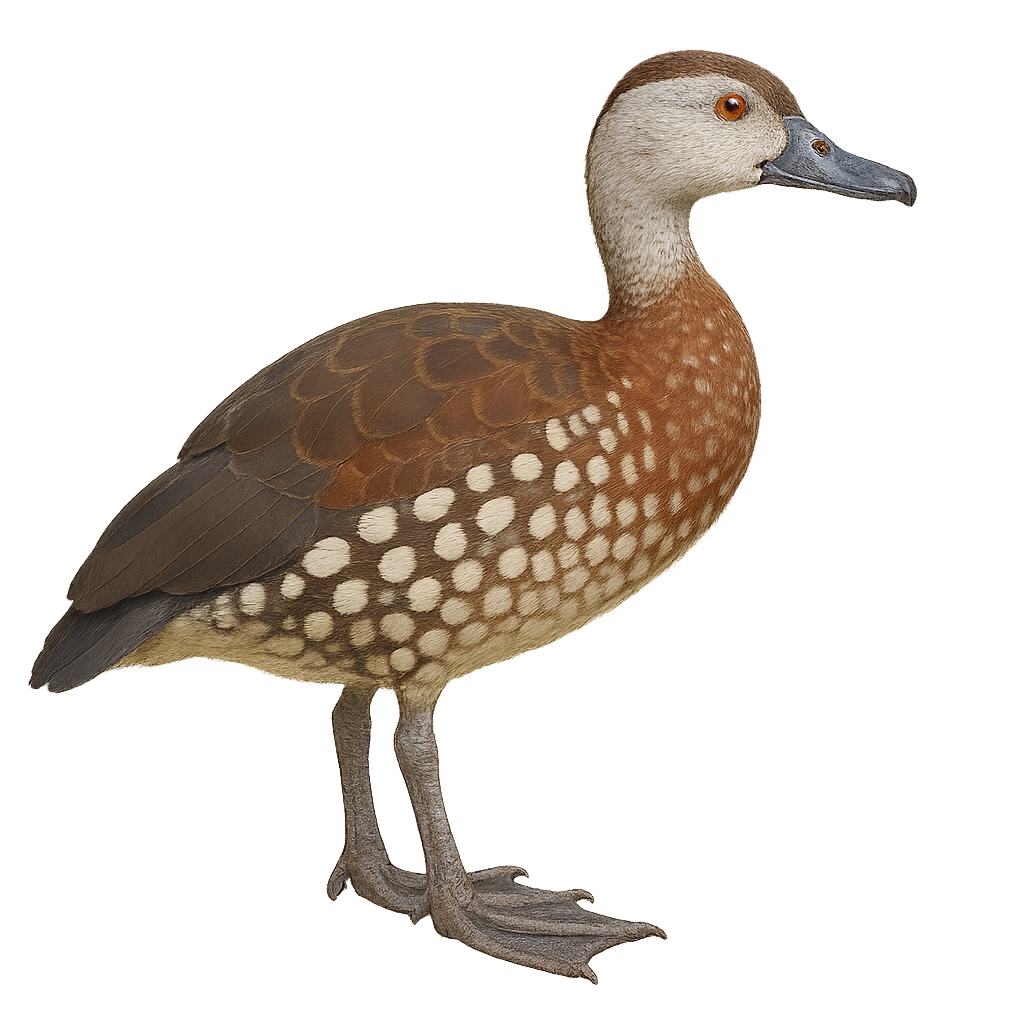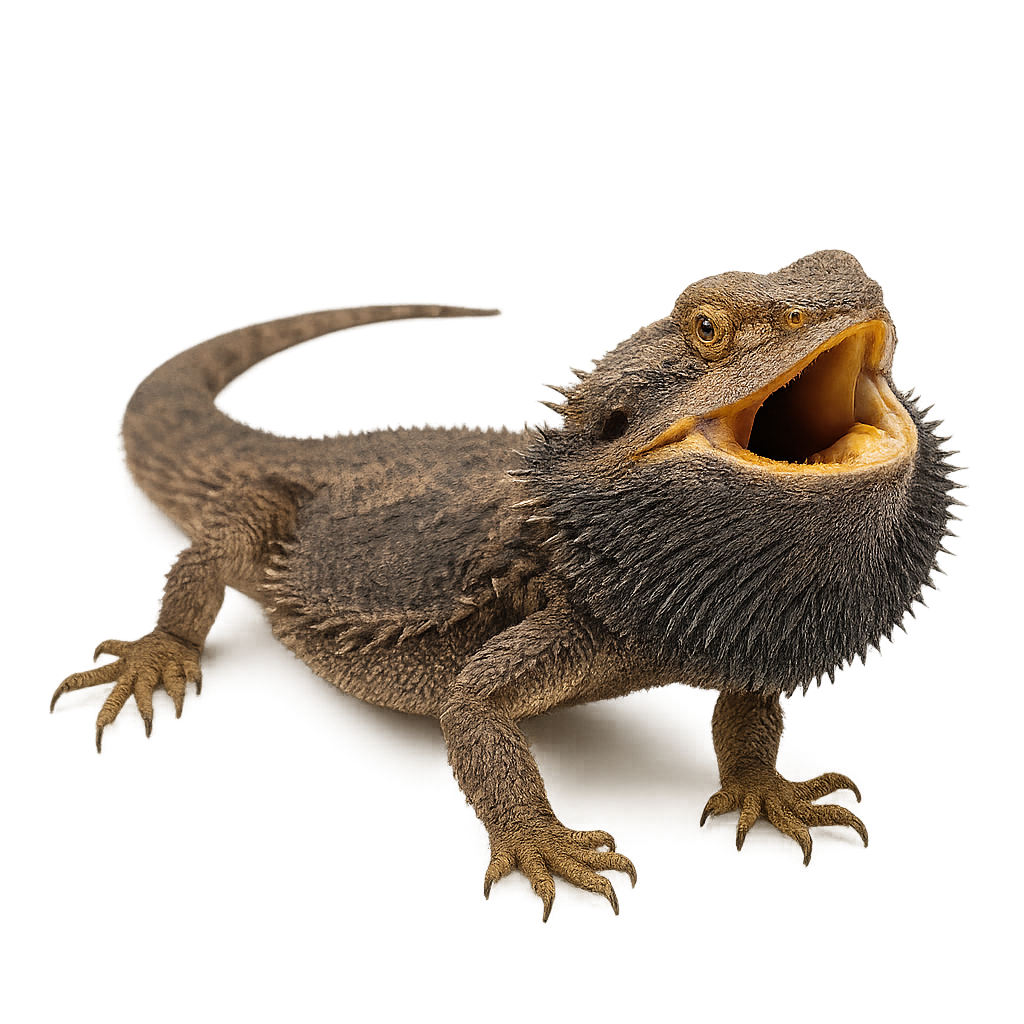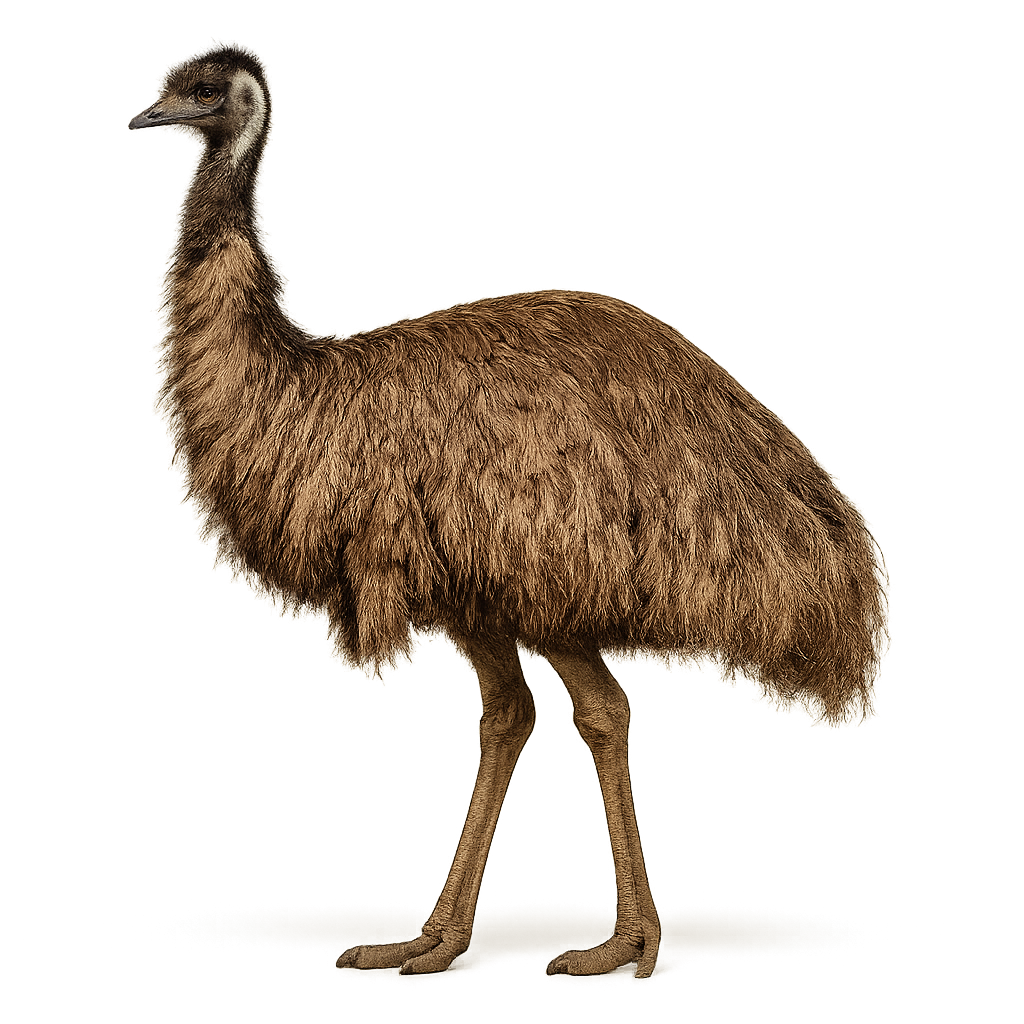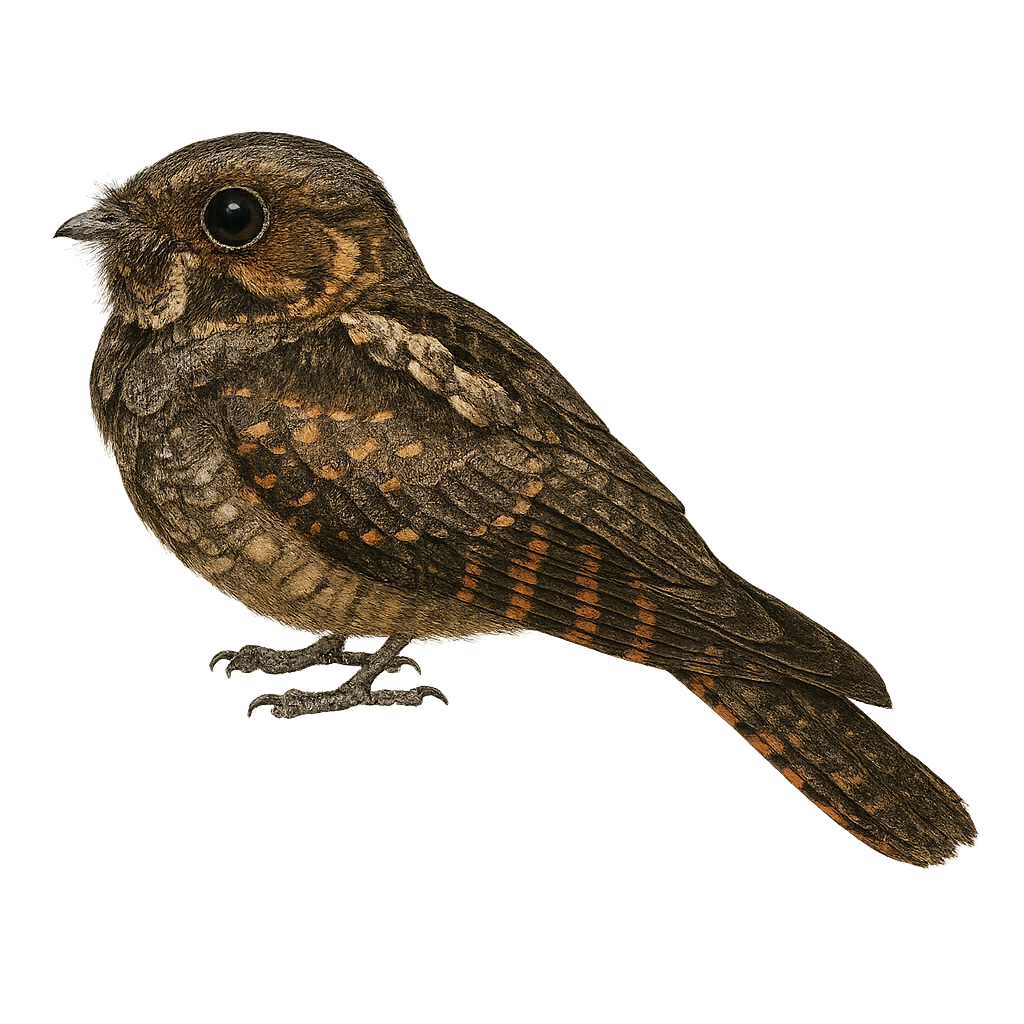The Uromastyx aegyptia, or Egyptian spiny-tailed lizard, is a robust lizard of 30–40 cm snout-vent length, with a long spiny tail used for defense. It inhabits rocky deserts and semi-arid steppes of North Africa and the Middle East. An opportunistic herbivore, it feeds on leaves, flowers, and succulent fruits. During the breeding season (April 1 to May 31), males become more colorful and perform threat displays, whipping their spiny tails in rivalry.
The Eastern imperial eagle is a large raptor measuring 68–90 cm in body length and spanning 1.76–2.2 m, with dark brown plumage, a pale golden head and contrasting white shoulder patches. It inhabits mature forest edges, wooded mosaics and open steppes across southeastern Europe and Central Asia, hunting primarily small mammals, birds and reptiles by stoop or soaring flight.
The Eurasian skylark is a small passerine of 15–17 cm with streaked brown plumage and pale underparts. It inhabits grasslands, cultivated fields and fallow land, feeding on seeds and insects on the ground or in flight. During the breeding season, males perform hovering song flights to attract females and defend territory.
The Edward's Hummingbird, or Amazilia edward, is a small, captivating bird belonging to the Trochilidae family. This hummingbird is distinguished by its brilliant plumage, with shades of emerald green and metallic blue that catch the eye. It primarily inhabits the tropical rainforests and wooded areas of Central America, where it feeds mainly on nectar but also on small insects. Its fast and agile flight allows it to move easily between flowers, thus contributing to pollination. Despite its small size, this hummingbird plays a crucial role in its ecosystem. Its breeding period is often marked by spectacular courtship displays, where the male showcases his vibrant colors to attract the female.
The Eastern Black-headed Batis is a small passerine bird belonging to the Platysteiridae family, predominantly found in the arid and semi-arid regions of East Africa. It is characterized by its striking black and white plumage, with a distinctive black band across the head and a white chest. Males and females exhibit sexual dimorphism, with males displaying brighter colors. This bird is often seen alone or in pairs, feeding mainly on insects caught in flight or on the ground. Known for its melodious calls and territorial behavior, the Eastern Black-headed Batis is a diurnal bird, active mainly in the morning and late afternoon. It is relatively tolerant of human presence, making it easier to observe.
The European Bison is the largest land mammal in Europe, characterized by its imposing size, thick fur, and arched back. Once widespread across the forests of Europe, it nearly went extinct in the early 20th century, but thanks to conservation programs, wild populations have been reintroduced in several European regions. The European Bison primarily inhabits forests and wooded meadows, where it feeds on grasses, leaves, twigs, and young tree shoots.
This bison is a social animal, living in small groups or large herds, with males fighting for dominance. While its population is growing, the European Bison remains a vulnerable species due to habitat loss and fragmentation of its territory. The protection and management of its habitats remain essential for its survival.
The European Badger is a medium-sized carnivorous mammal, easily recognizable by its gray fur, white stripes on its head, and stocky build. It primarily inhabits forests and hedgerows in Europe, where it digs complex burrows called "setts" for shelter and raising its young. The European Badger is omnivorous, feeding mainly on worms, insects, fruits, roots, and small mammals. Its nocturnal habits and solitary nature make it a difficult animal to observe.
It is an excellent digger and uses its powerful claws to modify its environment in search of food or to expand its burrow. While its population is generally stable, the European Badger faces threats such as habitat loss and road accidents. Protecting its habitats and managing its territories are crucial for the species' conservation.
The Eurasian bullfinch is a small, stocky passerine (14–16 cm) with bright pink-and-black plumage in males and more subdued tones in females. It inhabits mixed woodlands, hedgerows, and orchards across Europe and Asia, feeding on seeds and buds in winter and insects in spring. During the breeding season (April to July), the male utters soft calls from a perch and both partners build a sturdy nest of twigs and moss.
The Great Bittern is a large, secretive heron, easily recognized by its brown spotted and striped plumage, which allows it to blend perfectly into the reeds and vegetation of wetland areas where it lives. This nocturnal and solitary bird primarily inhabits marshes, ponds, and reed beds in Europe, Asia, and North Africa. It feeds mainly on fish, amphibians, and small birds, which it hunts by silently creeping through aquatic plants or standing still to wait for its prey.
The Great Bittern is an excellent master of camouflage, using its plumage to conceal itself in its environment, making it difficult to observe. Migratory, it leaves its breeding grounds to travel to Africa during the winter. While it is listed as "Near Threatened" on the IUCN Red List, it remains vulnerable to habitat loss due to wetland drainage and urbanization.
The Eastern Spot-billed Duck, Anas zonorhyncha, is a medium-sized waterfowl native to East Asia. It is easily recognized by its light brown plumage, iridescent wing patches, and distinctive yellow-tipped black bill. Preferring wetlands, lakes, and rivers, it feeds on aquatic plants, insects, and small crustaceans. This sociable duck often mingles with other duck species. Although generally tolerant of human presence, it can become wary if disturbed. Its adaptability to various habitats allows it to thrive in diverse environments, from coastal plains to mountainous regions.
The Eurasian Wigeon is an elegant waterfowl, easily recognizable by its distinctive plumage and characteristic whistle. The male, during the breeding season, has colorful plumage with a dark green head, light brown body, and a white stripe running across its neck. The female is more subdued, with speckled brown plumage, adapted for camouflage. This duck gets its name from the whistling sound it makes during its movements and social interactions.
The Eurasian Wigeon primarily inhabits wetlands, such as lakes, ponds, and marshes, where it feeds on aquatic plants, seeds, and insects. It is a long-distance migratory bird, leaving its breeding grounds in Europe to travel to warmer regions in Africa or the Middle East during the winter. While its population remains generally stable, it faces threats related to habitat loss and water pollution.
The European Beaver is a large, semi-aquatic rodent renowned for its exceptional ability to alter its environment. This rodent is easily identifiable by its brown fur, large orange incisors, and flat, scaly tail. It primarily inhabits rivers, lakes, and wetlands, where it builds dams to create ponds and wetlands that serve as refuges. The European Beaver is an excellent swimmer, capable of staying underwater for several minutes to move or escape danger.
It feeds mainly on bark, roots, and young tree shoots. In addition to its ability to modify waterways, the European Beaver plays a crucial role in the ecosystem by promoting the regeneration of wetland areas, which benefits many other animal species. Although its population was historically threatened by hunting and habitat loss, conservation efforts have stabilized its numbers, and the species is now protected in many regions.
The European goldfinch is a small, colorful bird found mainly in gardens, hedgerows, and meadows across Europe and Asia. It is easily recognized by its bright yellow plumage, black and white wings, and distinctive red head. This finch primarily feeds on thistle seeds, wildflowers, and insects. It is also known for its melodious song and its ability to adapt to various types of habitats.
The European Wildcat is a small, nocturnal, and discreet feline, often considered the ancestor of the domestic cat. It has a thick coat, typically gray-brown with dark stripes, which allows it to blend into its forested environment. Its size and behavior make it an agile and efficient hunter, primarily active at dusk. The European Wildcat has pointed ears and a slender body, with relatively long legs that allow it to move easily in varied environments, such as deciduous forests and mountainous regions.
This solitary cat feeds mainly on small mammals, birds, and insects, hunting them stealthily. While its population remains stable in some regions, it faces threats, including habitat loss, hybridization with domestic cats, and poaching. Conservation efforts are in place to protect this species, which is considered an important part of the forest ecosystem.
The Eurasian Pygmy Owl is the smallest owl in Europe, easily recognized by its tiny size and large, piercing yellow eyes. It has gray-brown plumage, with white markings on the chest and abdomen, and dark spots on its head. It has a stocky body and a small, round head, without the ear tufts found in other owls. This nocturnal predator primarily inhabits coniferous forests, where it hides in tree cavities or old nests to rest during the day.
The Eurasian Pygmy Owl primarily hunts small birds, insects, and rodents, which it captures at dawn or dusk. While its population remains relatively stable in some regions of Northern and Eastern Europe, it is threatened by deforestation and disruption of its habitats. This owl is protected by conservation measures aimed at preserving its coniferous forests and nesting sites.
The Siberian Roe Deer, also known as the Asian Roe Deer, is a slightly larger species of cervid compared to the European Roe Deer. It is easily recognizable by its darker coat, ranging from brown to gray, with white markings around the mouth and belly. Males carry antlers that, while smaller than those of other large cervids, are still distinct and visible. This species primarily inhabits coniferous forests and wooded areas of Siberia, Central Asia, and Mongolia, where it hides during the day and becomes more active at dusk and night.
The Siberian Roe Deer is an herbivore, primarily feeding on vegetation, including young shoots, leaves, fruits, and bark. It is known for its great agility and speed, allowing it to move easily through the rugged terrain of its habitat. While its population remains stable in some regions, it is threatened by deforestation, hunting, and habitat fragmentation.
The Eastern Chimpanzee, or Pan troglodytes schweinfurthii, inhabits the tropical rainforests of Central and East Africa. Known for their remarkable intelligence, tool use, and complex social structures, these primates live in communities of up to 150 individuals led by an alpha male. Their omnivorous diet includes fruits, leaves, insects, and occasionally meat. Eastern chimpanzees communicate through a variety of vocalizations, gestures, and facial expressions. Unfortunately, they are threatened by deforestation, poaching, and diseases, leading to a significant decline in their population over recent decades.
The European Pond Turtle is a medium-sized freshwater turtle, measuring between 12 and 20 cm in length. Its carapace is oval, slightly domed, dark brown to blackish, with yellow spots. The plastron is yellow with dark spots. The feet are webbed, adapted for swimming. This species inhabits stagnant or slow-flowing waters, such as ponds, marshes, and slow rivers, with dense aquatic vegetation. It is omnivorous, feeding on small aquatic invertebrates, fish, amphibians, and plant matter. Reproduction occurs in spring, with the female laying 8 to 10 eggs in loose, sunny soil. Incubation lasts about 80 to 110 days, with hatchlings emerging in late summer or the following spring. Listed as Near Threatened by the IUCN, the European Pond Turtle is protected in many European countries.
The Elegant Quail, or Callipepla douglasii, is a medium-sized bird belonging to the Odontophoridae family. It is primarily found in the arid and semi-arid regions of northwestern Mexico. This bird is distinguished by its elegant plumage, with shades of gray, brown, and distinctive head patterns. Males sport a characteristic black crest, while females are more subdued. The Elegant Quail is a terrestrial bird that prefers running to flying when disturbed. It primarily feeds on seeds, insects, and small fruits. Its breeding season coincides with the rainy season, ensuring an abundance of food for the young.
The Emerald Dove, or Chalcophaps indica, is a strikingly colorful bird known for its shimmering emerald-green plumage. It inhabits the tropical and subtropical forests of Southeast Asia, Australia, and the Pacific islands. This medium-sized bird, measuring about 23 to 28 cm in length, has a stout body with a greyish head and neck, contrasting with its green wings and brown back. The bill is bright red, as are the legs. The Emerald Dove is often seen alone or in pairs, foraging for seeds, fruits, and insects on the ground. Its flight is fast and direct, often accompanied by a distinctive wing-beating sound.
The Macaroni Cormorant is a large aquatic bird, easily recognized by its slender silhouette, glossy black plumage, and the tuft of feathers on top of its head, which gives it its name. It has a long, pointed beak, perfectly adapted to catching fish, which it captures by diving underwater. Macaroni cormorants are often seen on rocky coastlines, islands, or along marine shores, where they form large breeding colonies.
This cormorant primarily feeds on fish, but also consumes crustaceans and mollusks. It is an exceptional diver, capable of diving to considerable depths to hunt its prey. Although its population remains relatively stable, it is threatened in certain regions by habitat disruption, water pollution, and competition with other fishing birds. It is mainly found in the Mediterranean and along certain Atlantic coasts of Europe.
The Telescopus fallax, commonly known as the European Cat Snake, is a medium-sized snake, typically measuring between 70 and 100 cm in length. Its coloration ranges from gray to brown, often adorned with dark saddle-shaped patterns. This snake is primarily nocturnal and feeds on small vertebrates, including lizards and rodents. It has rear-fanged venomous teeth, but its venom is harmless to humans. Found in Mediterranean regions, it prefers rocky and dry habitats. Although discreet, it can be observed during its nocturnal outings.
The Eurasian Curlew is a large wader, easily recognizable by its long, down-curved bill and gray-brown plumage with dark speckling. This wader has a slender silhouette, long legs, and broad wings. It measures about 50 to 60 cm in length, with a wingspan of 90 to 105 cm. During the breeding season, the Eurasian Curlew has brighter and more contrasting plumage, but it becomes more subdued during winter, with duller tones.
The Eurasian Curlew primarily feeds on earthworms, invertebrates, and small crustaceans, which it captures in marshy areas, wet meadows, or along riverbanks. It is mainly observed in coastal areas or estuaries, where it forages by probing the ground for food. Although it is migratory, the Eurasian Curlew breeds mainly in Europe and winters in North Africa and southern Europe. It is currently classified as vulnerable due to habitat loss and disturbances in its breeding areas.
The European Green Toad, Bufotes viridis, is a medium-sized amphibian, typically measuring between 6 and 10 cm. Its skin is rough, adorned with green spots on a grayish or brownish background, allowing it to blend effectively into its natural surroundings. It is primarily found in Central and Eastern Europe, as well as Western Asia. Preferring open habitats such as meadows, steppes, and agricultural areas, it is also present in urban gardens. Mainly active at night, it feeds on insects, spiders, and other small invertebrates. Its ability to adapt to various environments and its varied diet make it a resilient species, although it is threatened by habitat loss and pollution.
The Espinoza's Poison Frog is a small, brightly colored frog endemic to the humid tropical forests of Ecuador. It is characterized by its smooth skin and vivid patterns, often red or orange with black spots. These bright colors serve as a warning to potential predators, indicating its toxicity. It typically measures between 2 and 3 cm in length. This species is diurnal and primarily feeds on small insects. It plays a crucial role in the ecosystem by regulating insect populations. Unfortunately, it is threatened by deforestation and habitat loss. Conserving its natural habitat is essential for its survival.
The Eudromia formosa, or elegant crested tinamou, is a terrestrial bird native to the arid and semi-arid regions of Argentina. It is easily recognizable by its distinctive crest and mottled brown-gray plumage, which allows it to blend into its environment. This bird measures about 40 cm in length and has strong legs adapted for fast running. Although capable of flight, it prefers to run to escape predators. The elegant tinamou primarily feeds on seeds, fruits, and insects. It is monogamous, and the male actively participates in egg incubation. Despite its discreet nature, it plays an important role in the ecosystem by dispersing seeds.
The Pogona barbata, commonly known as the Eastern Bearded Dragon, is a lizard native to Australia. It is recognizable by its "beard" of spines under the throat, which it can inflate to ward off predators or rivals. This diurnal reptile is often found in open forests, grasslands, and shrublands. It can reach a length of 60 cm, including the tail. Its diet is omnivorous, consisting of insects, small animals, and vegetation. The Pogona barbata is popular as a pet due to its generally docile nature and adaptability to captivity.
The Red Squirrel is a small tree-dwelling mammal, well-known for its reddish-brown fur and long ears, often tipped with tufts of hair. It typically measures between 20 and 25 cm in length, with a bushy tail that can reach up to 25 cm in length. This rodent is mainly found in deciduous and mixed forests across Europe and Asia, but it is also present in urban parks and gardens. The Red Squirrel is omnivorous, feeding mainly on nuts, seeds, mushrooms, and occasionally insects or bird eggs. Highly agile, it moves with ease between trees, using its tail as a stabilizer. It is a territorial animal that builds ball-shaped nests made of twigs, moss, and leaves, often placed in tree trunks or branches. While the species is still fairly widespread, it faces threats such as habitat loss, competition with the introduced Grey Squirrel, and collisions with vehicles.
Emu
Dromaius novaehollandiae
The Emu is a large flightless bird, belonging to the ratite family, which also includes the ostrich and the kiwi. It typically stands between 1.5 and 1.9 meters tall and weighs between 40 and 60 kg. Its plumage is generally brown-gray, with fine feathers that give it a slightly ruffled appearance. The Emu is recognizable by its long bare neck and small wings, which prevent it from flying. It is endemic to Australia, where it inhabits a variety of environments, from open forests to savannas and semi-desert areas. This bird is primarily herbivorous, feeding on seeds, fruits, roots, and young shoots. Although it cannot fly, the Emu is a fast runner, capable of reaching speeds up to 50 km/h over short distances. It is often solitary or lives in small groups, except during the breeding season. The Emu plays an important role in seed dispersal, contributing to the regeneration of vegetation. While the species is currently listed as of least concern, it faces threats such as habitat loss, hunting, and collisions with vehicles.
The Eastern Whip-poor-will, or Antrostomus vociferus, is a medium-sized nocturnal bird known for its distinctive call that echoes through the forests of eastern North America. Its cryptic plumage, a blend of gray, brown, and black, allows it to blend seamlessly into its forest environment. It is primarily active at dusk and dawn, feeding on flying insects it catches in flight. This bird nests on the ground, often on a bed of dead leaves, and does not build an elaborate nest. Its breeding season extends from spring to summer, and it is known for its fidelity to its nesting sites. Although discreet, its repetitive and melodious call is a characteristic feature of summer evenings in its natural habitat.



